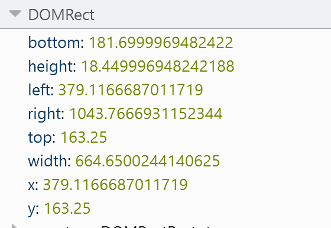Tor users can be tracked by mouse movements and processor benchmarks.
Jose Carlos Norte, an independent information security researcher (Jose Carlos Norte), revealed a couple of new methods for deanonymizing Tor users. Methods involve the identification using JavaScript "unique fingerprint" of the user by which it can be tracked.

Creating a unique behavioral fingerprint is dangerous for Tor users, because the data obtained when working in Tor can be compared with the data obtained when working with a regular browser. This does not always allow to determine the user with one hundred percent accuracy, but it will give some start to the investigation.
Although Roskomnadzor argues that using site blocking tools is not against the law, behavioral technologies will help you find the right person — including in reverse order: in Tor, from a regular browser.
')
One of the vulnerabilities, writes Jose Carlos Norte , is the speed of interaction with the mouse wheel. It depends on the configuration of the operating system and on the hardware. Check out what the result looks like at this link . The next item is the speed of the mouse itself. With JavaScript, you can measure it while the user is sitting in the browser.
Again, using JavaScript, you can measure the characteristics of a user's CPU — record the time it takes to complete a task, and then use this information as a suspect’s computer tag. The Tor browser includes protection against such scenarios by limiting the JavaScript Date.getTime () function, but there are ways around this limitation.
Norte described the use of another method, Element.getBoundingClientRect (), which returns a text rectangle object that includes a group of text rectangles. The return value is a TextRectangle object that contains properties for reading left, top, right, and bottom, describing the box with the borders in the pixel dimension. Here’s what the result looks like in the Tor browser from two different computers. The difference is obvious, and it can also be used to locate users.


Norte's research has shown how easy it is to identify the unique imprints of Tor users in order to track their activities on the Internet and correlate with visits to various pages.

Creating a unique behavioral fingerprint is dangerous for Tor users, because the data obtained when working in Tor can be compared with the data obtained when working with a regular browser. This does not always allow to determine the user with one hundred percent accuracy, but it will give some start to the investigation.
Although Roskomnadzor argues that using site blocking tools is not against the law, behavioral technologies will help you find the right person — including in reverse order: in Tor, from a regular browser.
')
One of the vulnerabilities, writes Jose Carlos Norte , is the speed of interaction with the mouse wheel. It depends on the configuration of the operating system and on the hardware. Check out what the result looks like at this link . The next item is the speed of the mouse itself. With JavaScript, you can measure it while the user is sitting in the browser.
Again, using JavaScript, you can measure the characteristics of a user's CPU — record the time it takes to complete a task, and then use this information as a suspect’s computer tag. The Tor browser includes protection against such scenarios by limiting the JavaScript Date.getTime () function, but there are ways around this limitation.
Norte described the use of another method, Element.getBoundingClientRect (), which returns a text rectangle object that includes a group of text rectangles. The return value is a TextRectangle object that contains properties for reading left, top, right, and bottom, describing the box with the borders in the pixel dimension. Here’s what the result looks like in the Tor browser from two different computers. The difference is obvious, and it can also be used to locate users.


Norte's research has shown how easy it is to identify the unique imprints of Tor users in order to track their activities on the Internet and correlate with visits to various pages.
Source: https://habr.com/ru/post/368311/
All Articles